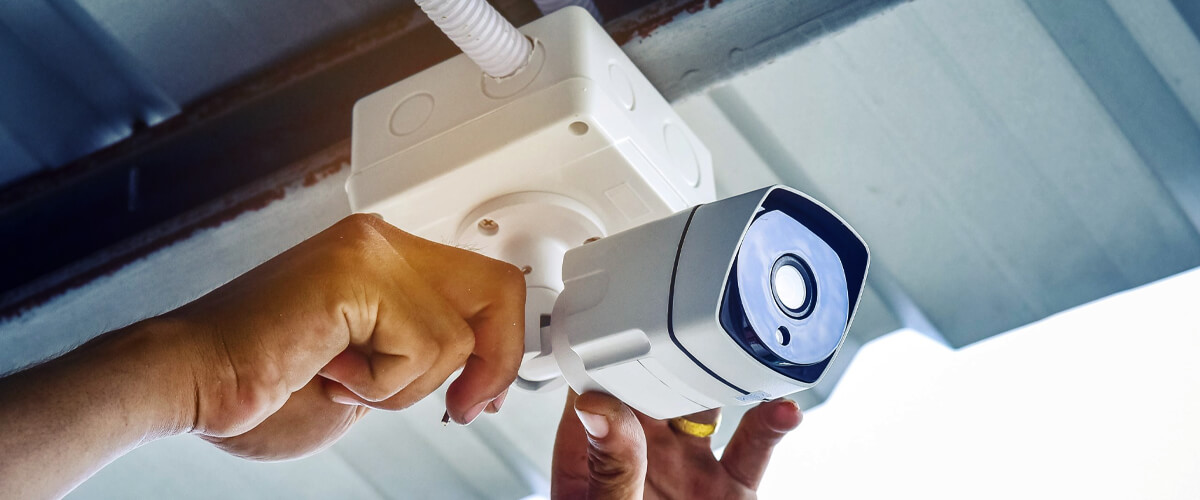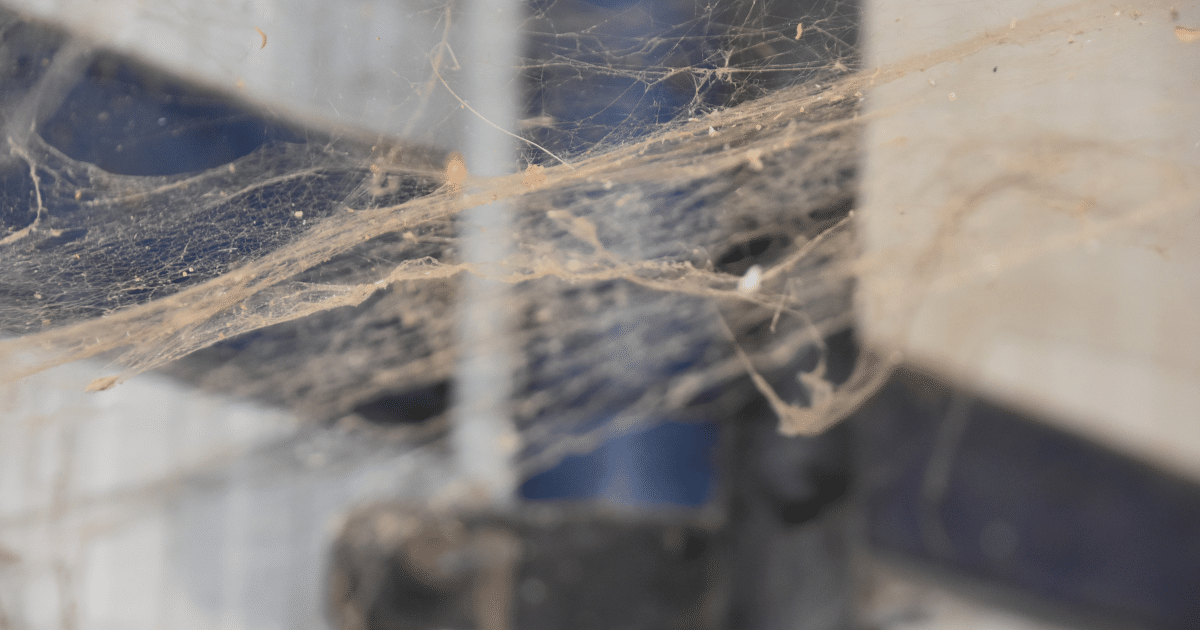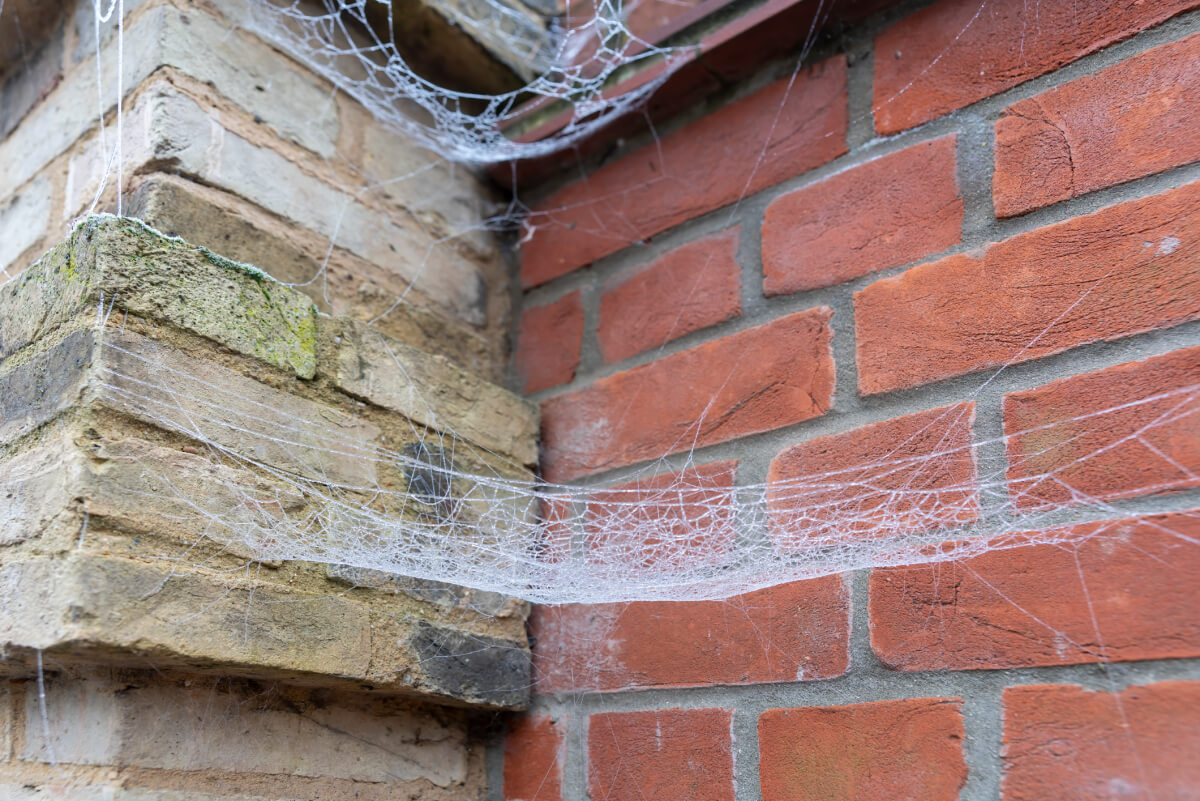How to keep cobwebs off security cameras – a seemingly mundane question, yet one that holds significant implications for home and business security. Cobwebs obscuring your security cameras not only compromise their effectiveness but also present an image of neglect, potentially deterring potential customers or raising concerns among neighbors. The presence of cobwebs signals a lack of attention to detail, raising questions about the overall security measures in place.
This article delves into the science behind cobweb formation, explores practical solutions for prevention, and offers insightful tips for maintaining clear and functional security cameras.
Understanding the factors that contribute to cobweb formation is crucial for developing effective solutions. Spiders are attracted to dark, undisturbed areas, making security cameras prime targets. Factors such as the type of camera housing, its location, and the surrounding environment all influence the frequency of cobweb formation. By addressing these factors, we can create a less hospitable environment for spiders and minimize the risk of cobwebs obstructing our security cameras.
Understanding Cobweb Formation
Ever wondered why your security cameras seem to be magnets for cobwebs? It’s not just bad luck – there are specific factors that make these little webs a common sight. Let’s delve into the world of cobwebs and security cameras to understand what drives their formation.
Conditions Encouraging Cobweb Formation
Cobwebs aren’t just random decorations; they’re carefully constructed homes for spiders. Security cameras, with their stationary presence and often secluded locations, provide ideal conditions for spiders to build their webs.
- Darkness and Shadows: Spiders prefer dark, secluded spots to avoid predators and build their webs undisturbed. Security cameras, especially those in corners or under eaves, offer perfect shadowy havens.
- Minimal Disturbance: Spiders avoid areas with frequent movement. Security cameras, being static, provide a peaceful haven for web construction.
- Stable Structures: Spiders need sturdy surfaces to anchor their webs. The rigid structure of security cameras and their mounting brackets provide ideal support for web construction.
- Availability of Prey: Spiders are attracted to areas with plenty of insects. Security cameras, especially those near lights, often attract insects, providing a ready food source for spiders.
Common Spider Types
Not all spiders are web-building champions. Some types are more likely to create those noticeable webs around security cameras.
- Orb Weavers: Known for their circular, intricate webs, these spiders are frequent visitors to security cameras. Their webs are often large and noticeable, making them a common culprit.
- House Spiders: These common household spiders are skilled web builders and often spin their webs in corners and under eaves, making security cameras a prime location.
- Cobweb Spiders: These spiders are masters of creating messy, tangled webs, perfect for trapping unsuspecting insects. Their webs are often found in dark, undisturbed corners, making security cameras an attractive location.
Factors Influencing Cobweb Frequency
The frequency of cobweb formation around security cameras isn’t a constant. Several factors influence how often you’ll find these webs.
- Location: Cameras placed in areas with high insect activity, such as near lights or vegetation, are more likely to attract spiders.
- Season: Spider activity peaks during warmer months, making cobwebs more prevalent during spring and summer.
- Camera Type: Some camera types, like dome cameras, have a more enclosed design that can create a more inviting space for spiders.
Preventive Measures: How To Keep Cobwebs Off Security Cameras

You’ve conquered the cobweb conundrum by understanding their formation. Now, let’s arm ourselves with proactive strategies to keep those pesky webs at bay! This section will guide you through the art of preventing cobweb formation, focusing on smart camera placement and protective gear.
Choosing Strategic Camera Locations
The first step in the war against cobwebs is to strategically place your cameras. Spiders, like any good real estate agent, are looking for prime locations. Here’s how to outsmart them:
- Avoid Dusty Corners: Spiders love dusty corners where they can spin their webs undisturbed. Position your cameras away from these areas. Think of it as their “no-build zone.”
- Light It Up: Spiders are nocturnal creatures, preferring the shadows. Well-lit areas deter them, making your cameras less appealing targets. Think of it as their “nighttime curfew.”
- Keep It Clean: Spiders are attracted to clutter. Keep the surrounding area tidy, and you’ll reduce their chances of setting up shop. Think of it as their “spidy-cleanliness policy.”
Camera Housings and Protective Covers
Just like a knight needs armor, your security cameras need protection! Camera housings and protective covers are your allies in the battle against cobwebs.
- Camera Housings: These sturdy enclosures provide a physical barrier, keeping spiders out. Think of it as their “spidy-shield.”
- Protective Covers: These can be mesh or plastic covers that fit over the camera lens, preventing cobwebs from forming directly on the lens. Think of it as their “spidy-filter.”
Cleaning and Maintenance

Keeping your security cameras clean is crucial for optimal performance. Cobwebs, dust, and other debris can obstruct the camera’s lens, reducing image quality and potentially hindering its ability to detect motion. Regular cleaning is essential to ensure your security system remains effective.
Cleaning Tools and Materials
The right tools and materials are essential for cleaning your security cameras effectively and safely. Here’s a list of recommended items:
- Microfiber Cloth: A soft microfiber cloth is ideal for gently wiping away dust and cobwebs without scratching the camera’s lens or housing.
- Compressed Air: Compressed air can effectively remove dust and debris from hard-to-reach areas, like the camera’s lens and sensor.
- Lens Cleaning Solution: A specialized lens cleaning solution can be used to remove fingerprints, smudges, and other stubborn marks from the camera lens.
- Cotton Swabs: Cotton swabs can be used to clean small, intricate areas, like the corners of the camera lens or around the sensor.
- Small Brush: A small, soft-bristled brush can be used to remove dust and cobwebs from the camera housing and surrounding areas.
Cleaning Techniques
Cleaning your security cameras requires a gentle approach to avoid damaging the delicate components. Here’s a step-by-step guide:
- Power Down the Camera: Always disconnect the camera from its power source before cleaning to prevent electrical hazards.
- Remove Cobwebs: Use a small brush or a compressed air can to remove cobwebs from the camera housing and surrounding areas. Be careful not to apply too much pressure, as this could damage the camera.
- Clean the Lens: Use a microfiber cloth to gently wipe away dust and debris from the camera lens. If necessary, apply a small amount of lens cleaning solution to the cloth. Avoid applying the solution directly to the lens, as this could damage the coating.
- Clean the Housing: Use a microfiber cloth or a small brush to remove dust and debris from the camera housing. Avoid using harsh chemicals or abrasive cleaners, as these could damage the camera’s finish.
- Reassemble and Power Up: Once the camera is clean, reassemble it and reconnect it to its power source. Test the camera to ensure it is functioning properly.
Cleaning Different Camera Types
Different types of security cameras require slightly different cleaning techniques. Here’s a breakdown of cleaning methods for common camera types:
Dome Cameras
Dome cameras are typically more challenging to clean due to their rounded shape. It’s important to use a soft, microfiber cloth and gentle pressure to avoid scratching the lens or housing. For cobwebs, use a small brush or compressed air to remove them from the camera’s base and the dome itself.
Bullet Cameras
Bullet cameras are easier to clean than dome cameras because of their cylindrical shape. Use a microfiber cloth to wipe away dust and debris from the lens and housing. For cobwebs, use a small brush or compressed air to remove them from the camera’s base and the barrel.
PTZ Cameras
PTZ cameras are more complex and require careful cleaning. Use a microfiber cloth to clean the lens and housing, and avoid applying excessive pressure. For cobwebs, use a small brush or compressed air to remove them from the camera’s base and the pan/tilt mechanism. Be sure to clean the lens carefully to avoid affecting the camera’s image quality.
Environmental Modifications
Modifying the environment around your security cameras can significantly reduce cobweb formation and spider infestation. By making your property less appealing to spiders, you can create a more spider-free zone.
Environmental Changes, How to keep cobwebs off security cameras
Simple changes to your environment can make a big difference in deterring spiders. These changes create an unwelcoming habitat for spiders, reducing their likelihood of building webs around your cameras.
- Remove clutter: Spiders love to build webs in dark, undisturbed areas. Removing clutter like boxes, piles of leaves, and overgrown vegetation will eliminate potential hiding spots.
- Trim vegetation: Keep trees and bushes trimmed back from your security cameras. This reduces the chances of spiders using branches as pathways to reach your cameras.
- Seal cracks and crevices: Spiders often enter buildings through cracks and crevices. Sealing these openings will prevent them from finding their way inside.
- Clean up debris: Spiders are attracted to food sources like insects and other small creatures. Regularly cleaning up debris and removing food sources will make your property less appealing to spiders.
Natural Repellents
Certain natural repellents can help discourage spiders from making your security cameras their home.
- Citrus: Spiders dislike the smell of citrus. You can use citrus peels, essential oils, or commercial citrus-based repellents to deter them.
- Peppermint: Peppermint oil is another effective natural repellent. You can use peppermint oil diffusers or spray diluted peppermint oil around your cameras.
- Vinegar: Vinegar’s acidic nature can deter spiders. You can spray a diluted vinegar solution around your cameras.
- Eucalyptus: Eucalyptus oil is a natural insect repellent, including spiders. You can use eucalyptus oil diffusers or spray diluted eucalyptus oil around your cameras.
Landscaping Maintenance
Regular landscaping maintenance can play a significant role in preventing spider infestations. By keeping your yard clean and tidy, you create an environment that is less attractive to spiders.
- Mow your lawn regularly: A well-maintained lawn with short grass reduces the chances of spiders finding hiding places.
- Remove weeds and debris: Weeds and debris provide shelter and food sources for spiders. Regularly removing them will make your yard less hospitable.
- Trim hedges and bushes: Overgrown hedges and bushes provide ideal nesting grounds for spiders. Regularly trimming them will reduce the number of hiding places.
- Keep gutters clean: Clogged gutters can create a breeding ground for insects, attracting spiders. Regularly cleaning your gutters will help prevent spider infestations.
Long-Term Solutions

You’ve tackled the cobwebs, but you don’t want to be a permanent spider-web-wiping warrior. This section explores strategies to keep those pesky webs at bay for the long haul, ensuring your security cameras remain clear and your peace of mind intact.
Ongoing Maintenance Plan
A proactive approach is key to keeping cobwebs at bay. Regular maintenance is your secret weapon against those eight-legged architects. Here’s a plan for ongoing cobweb prevention:
- Scheduled Cleaning: Establish a regular cleaning schedule, like once a month or quarterly, depending on your environment’s dustiness. A quick wipe-down with a microfiber cloth or a gentle vacuum cleaner can make a big difference.
- Visual Inspections: Don’t just rely on your cleaning schedule. Take a quick peek at your cameras regularly. Catch those early cobwebs before they become full-blown spider palaces.
- Environment Monitoring: Keep an eye on your environment. Is there a lot of dust, pollen, or other debris that attracts spiders? Addressing these environmental factors can reduce the likelihood of cobweb formation.
Automated Cleaning Systems
Who wouldn’t want a robot to do their dirty work? Automated cleaning systems can be a game-changer for keeping security cameras cobweb-free.
- Robotic Cleaners: These miniature robots can be programmed to navigate your cameras and remove cobwebs with a gentle brush or vacuum. They’re ideal for hard-to-reach areas and can be scheduled for regular cleaning.
- Air Blowers: A simple air blower can be used to dislodge cobwebs and dust. You can set up a timer to activate the blower periodically, keeping your cameras clear.
Innovative Solutions
Beyond the usual, here are some innovative ideas to reduce cobweb formation:
- Anti-Spider Sprays: Certain sprays containing natural repellents can deter spiders from setting up shop near your cameras. These sprays are generally safe for use around electronics.
- Ultrasonic Devices: Ultrasonic devices emit high-frequency sounds that are unpleasant to spiders, making them less likely to build webs in the area. These devices are often used for pest control.
- Strategic Camera Placement: Placing your cameras in areas less prone to cobwebs can reduce the need for frequent cleaning. For example, avoid placing cameras in corners or near areas with lots of vegetation.
The battle against cobwebs is an ongoing one, requiring a multi-faceted approach. While proactive measures like choosing camera locations wisely and employing protective covers can minimize cobweb formation, regular cleaning and maintenance are essential for ensuring clear visibility. By incorporating these strategies into your security routine, you can maintain a vigilant eye on your property, free from the hindrance of cobwebs and ensuring the effectiveness of your security system.
FAQ Compilation
What are the most common types of spiders that build webs around security cameras?
Common spiders that build webs around security cameras include orb weavers, cellar spiders, and house spiders. These spiders are attracted to dark, undisturbed areas, making security cameras ideal locations for their webs.
Can I use pesticides to prevent cobwebs on my security cameras?
While pesticides can be effective in killing spiders, they are not recommended for use around security cameras. Pesticides can damage the camera’s sensitive electronics and potentially contaminate the surrounding environment.
Are there any natural repellents that can deter spiders?
Yes, there are several natural repellents that can deter spiders, including peppermint oil, citrus peels, and vinegar. These repellents can be used to create a barrier around security cameras, discouraging spiders from approaching.






